Missouri State Capitol
Introduction
Text-to-speech Audio
Built from 1913 to 1917, the Missouri State Capitol is located Jefferson City and is the seat of the state government. It is the state's third capitol building. Like other state capitol buildings, it was designed in the Classical Revival style. Its most prominent feature, the dome, rises 262 feet from the basement floor. The building houses the Missouri State History Museum, which is operated by the Missouri Department of Natural Resources. The capitol was entered into the National Register of Historic Places in 1969.
Images
The capitol
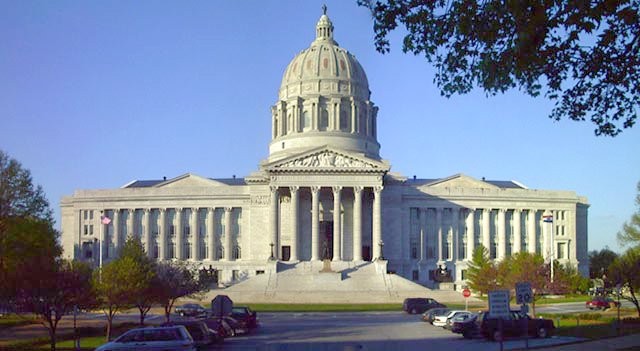
Aerial view of the capitol
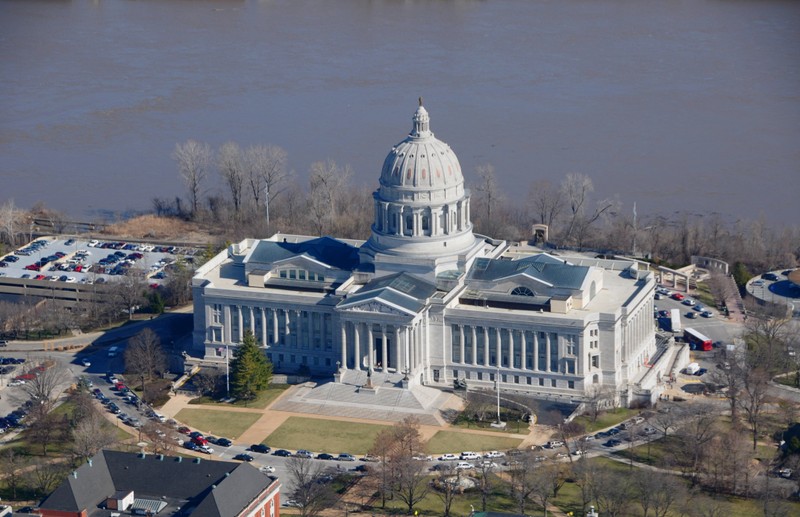
A view inside the building
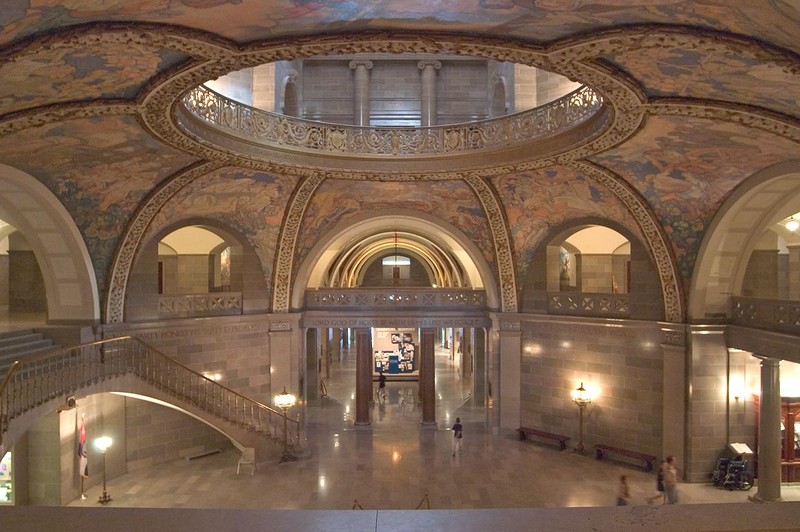
The House Chambers
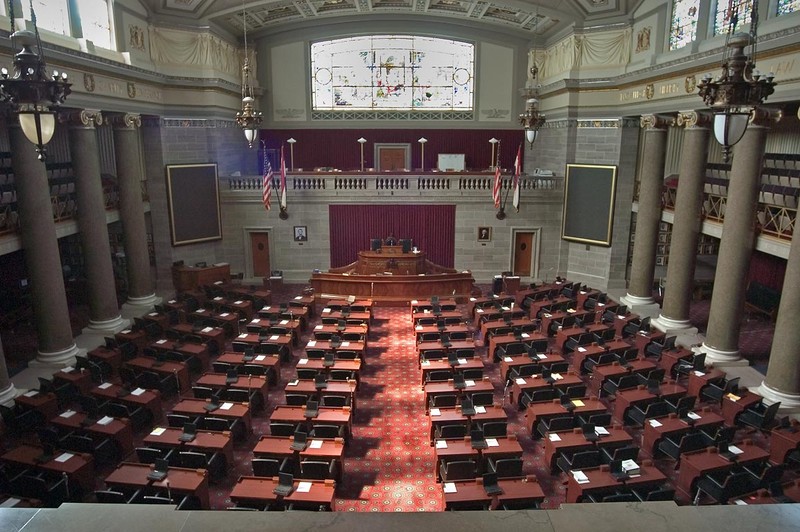
Thomas Benton's mural "A Social History of the State of Missouri' in the Missouri House Lounge on the 3rd floor of the State Capitol building. Painted in 1936.
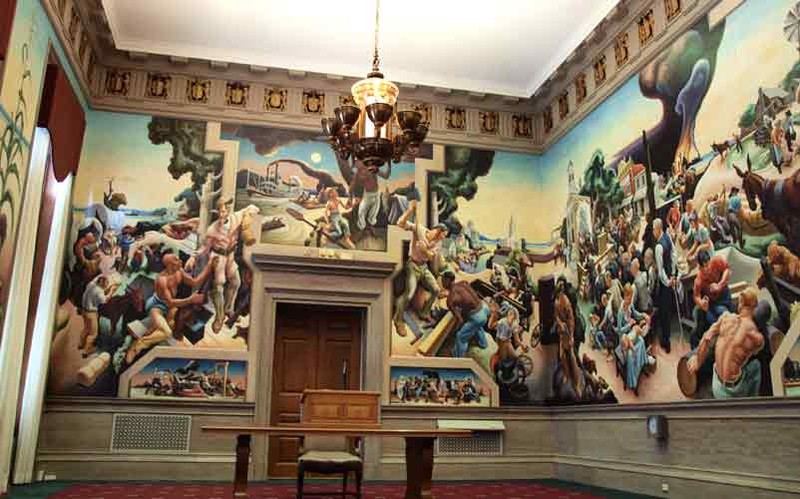
Missouri State Capitol under construction 1914-1917 Courtesy of the Missouri State Museum's Collection.
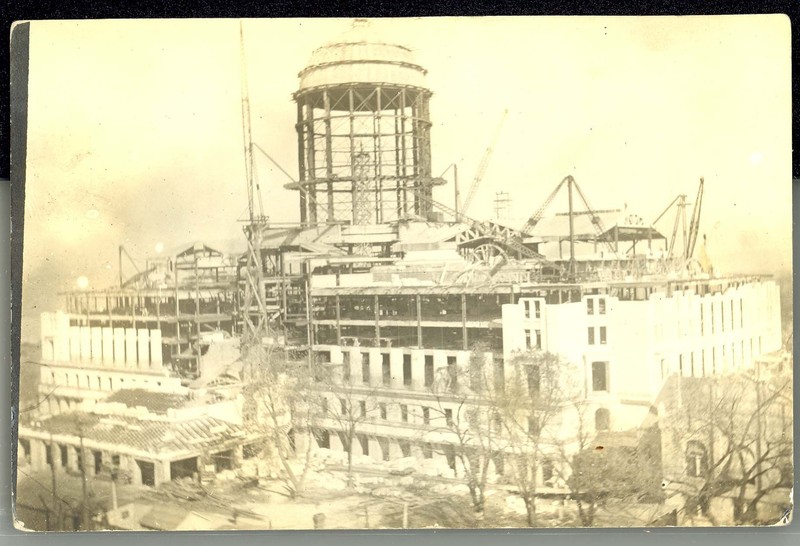
View of the Missouri State Capitol from West Main Street/Mill Bottom area c. 1923. Courtesy of the Missouri State Museum's Collection
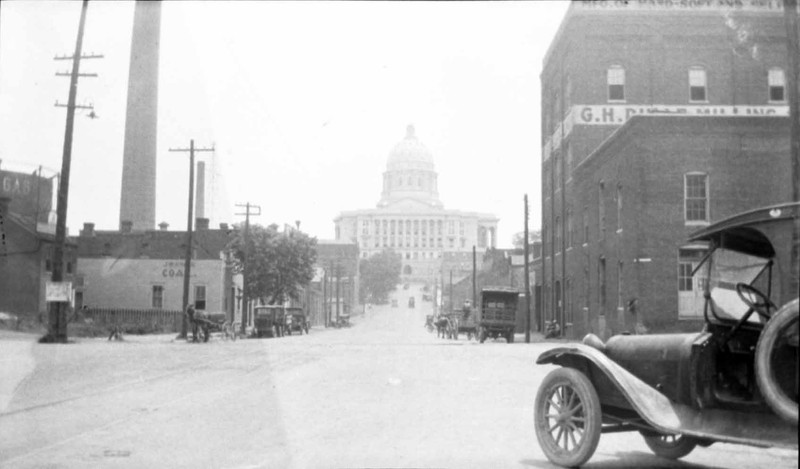
Aerial view of Jefferson City and Missouri State Capitol c. 1934 Image courtesy of the Missouri State Museum's collection.

Missouri State Capitol c. 1924 Courtesy of the Missouri State Museum's collection
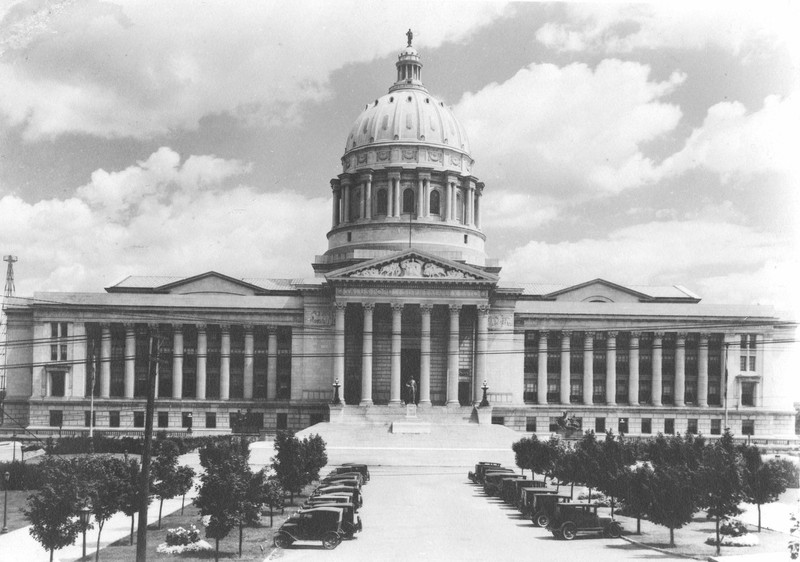
Backstory and Context
Text-to-speech Audio
Jefferson City became Missouri's state capital in 1826, the same year the first capitol building was finished after a construction period of three years. It burned down in 1837 but the second capitol building was completed by 1840. A fire, however, destroyed that one, too, in 1911 after a lightning bolt struck the dome. Shortly thereafter, the current building was authorized to be constructed, on the same high bluff overlooking the Missouri River. By 1917, the building was finished. It is supported by 285 concrete piers standing on bedrock from 20 to 50 feet below ground surface. Including its wings, the building is 437 feet long by 200 feet wide. Carthage, Missouri limestone forms the building's exterior surfaces and much of its flooring.
Several artists, including Alexander Calder, were commissioned to create artwork for the building. Ceres, the goddess of grain, tops the lantern of the dome; the bronze figure honors the state's agricultural heritage. Inside the dome hangs a 9,000-pound chandelier. The painted works of Frank Brangwyn grace the dome's interior. Another impressive interior feature is the grand staircase from the portico to the third floor and 30 feet wide.
In 1935, artist Thomas Hart Benton painted a mural in the House Lounge that depicted everyday life over time in Missouri; its vivid depiction of the underbelly of life in the state sparked controversy. Scenes of slavery, lynching, a baby's bare bottom, and poverty offended some of the more sensitive viewers but the mural has endured.
All four floors of the capitol are open to the public, including the State Museum on the ground floor.
Sources
Ashcroft, John R. - MO Secretary of State. What is the history of the Missouri State Capitol?, Missouri History. Accessed March 18th 2020. https://www.sos.mo.gov/archives/history/capitol.asp.
Missouri State Parks. "Center of Government." http://mostateparks.com/page/55186/missouri-state-capitol. Retrieved 4-20-15.
